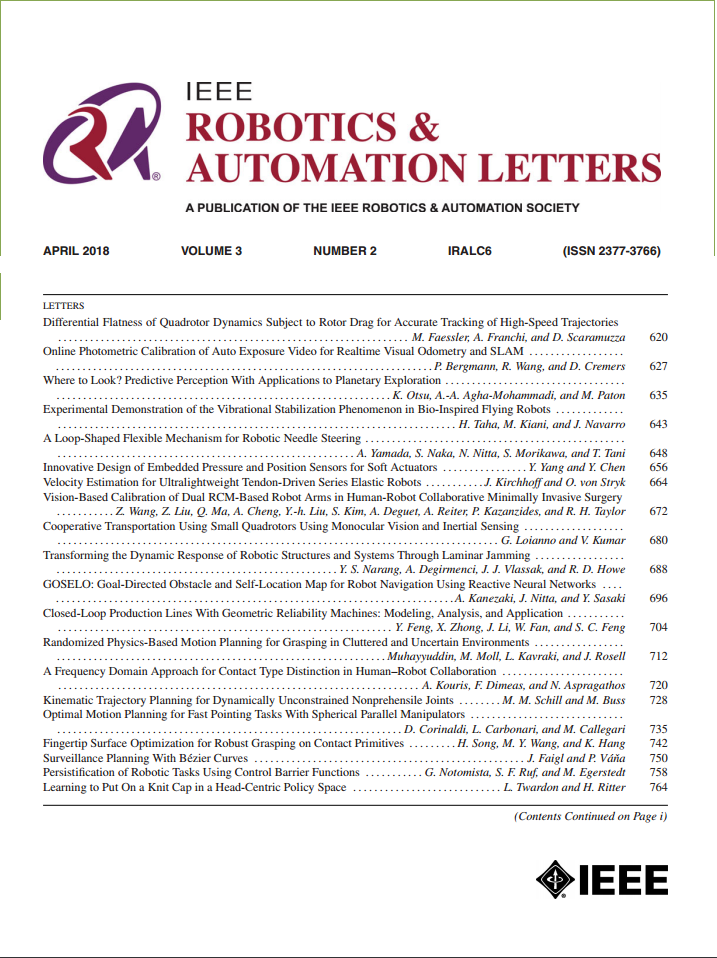STAMP: Differentiable Task and Motion Planning via Stein Variational Gradient Descent
IF 4.6
2区 计算机科学
Q2 ROBOTICS
引用次数: 0
Abstract
Planning for sequential robotics tasks often requires integrated symbolic and geometric reasoning. TAMP algorithms typically solve these problems by performing a tree search over high-level task sequences while checking for kinematic and dynamic feasibility. This can be inefficient because, typically, candidate task plans resulting from the tree search ignore geometric information. This often leads to motion planning failures that require expensive backtracking steps to find alternative task plans. We propose a novel approach to TAMP called Stein Task and Motion Planning (STAMP) that relaxes the hybrid optimization problem into a continuous domain. This allows us to leverage gradients from differentiable physics simulation to fully optimize discrete and continuous plan parameters for TAMP. In particular, we solve the optimization problem using a gradient-based variational inference algorithm called Stein Variational Gradient Descent. This allows us to find a distribution of solutions within a single optimization run. Furthermore, we use an off-the-shelf differentiable physics simulator that is parallelized on the GPU to run parallelized inference over diverse plan parameters. We demonstrate our method on a variety of problems and show that it can find multiple diverse plans in a single optimization run while also being significantly faster than existing approaches.基于Stein变分梯度下降的可微任务和运动规划
规划顺序机器人任务通常需要集成符号和几何推理。TAMP算法通常通过在检查运动和动态可行性的同时对高级任务序列执行树搜索来解决这些问题。这可能是低效的,因为通常由树搜索产生的候选任务计划会忽略几何信息。这通常会导致运动规划失败,需要昂贵的回溯步骤来找到替代任务计划。本文提出了一种新的Stein任务与运动规划(STAMP)方法,将混合优化问题分解为一个连续域。这使我们能够利用可微分物理模拟的梯度来充分优化TAMP的离散和连续计划参数。特别是,我们使用基于梯度的变分推理算法(称为Stein变分梯度下降)来解决优化问题。这使我们能够在一次优化运行中找到解决方案的分布。此外,我们使用了一个现成的可微分物理模拟器,在GPU上并行运行不同计划参数的并行推理。我们在各种问题上展示了我们的方法,并表明它可以在一次优化运行中找到多个不同的计划,同时也比现有方法快得多。
本文章由计算机程序翻译,如有差异,请以英文原文为准。
求助全文
约1分钟内获得全文
求助全文
来源期刊

IEEE Robotics and Automation Letters
Computer Science-Computer Science Applications
CiteScore
9.60
自引率
15.40%
发文量
1428
期刊介绍:
The scope of this journal is to publish peer-reviewed articles that provide a timely and concise account of innovative research ideas and application results, reporting significant theoretical findings and application case studies in areas of robotics and automation.
 求助内容:
求助内容: 应助结果提醒方式:
应助结果提醒方式:


